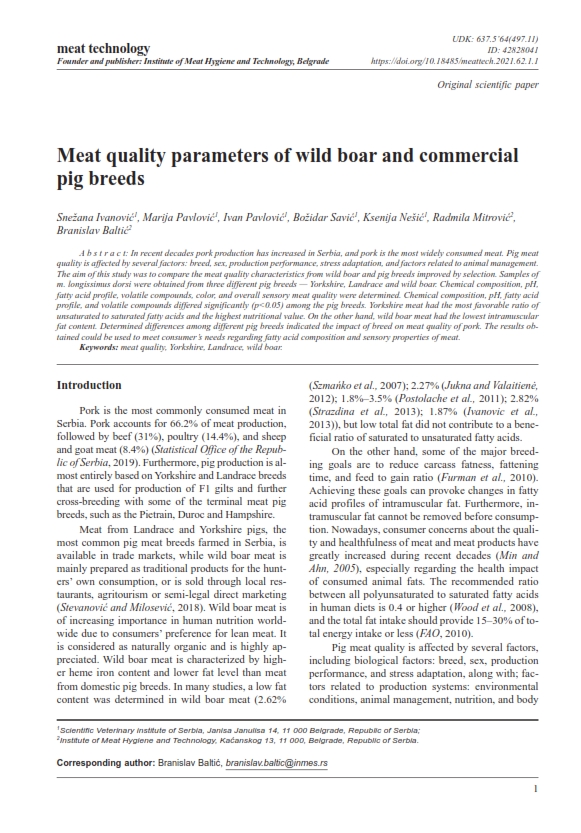Meat quality parameters of wild boar and commercial pig breeds
Abstract
A b s t r a c t: In recent decades pork production has increased in Serbia, and pork is the most widely consumed meat. Pig meat
quality is affected by several factors: breed, sex, production performance, stress adaptation, and factors related to animal management.
The aim of this study was to compare the meat quality characteristics from wild boar and pig breeds improved by selection. Samples of
m. longissimus dorsi were obtained from three different pig breeds — Yorkshire, Landrace and wild boar. Chemical composition, pH,
fatty acid profile, volatile compounds, color, and overall sensory meat quality were determined. Chemical composition, pH, fatty acid
profile, and volatile compounds differed significantly (p<0.05) among the pig breeds. Yorkshire meat had the most favorable ratio of
unsaturated to saturated fatty acids and the highest nutritional value. On the other hand, wild boar meat had the lowest intramuscular
fat content. Determined differences among different pig breeds indicated the impact of breed on meat quality of pork. The results ob-
tained could be used to meet consumer’s needs regarding fatty acid composition and sensory properties of meat.





